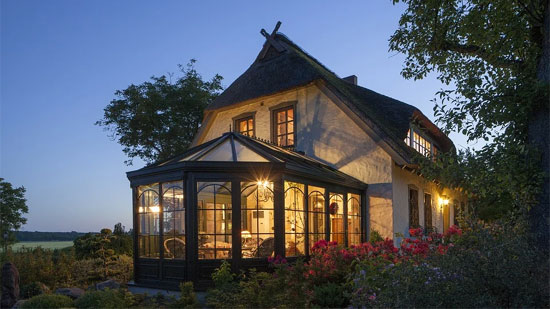 A sunroom is a versatile space that allows you to bring the beauty of nature indoors, and it’s undoubtedly, a beautiful addition to your home.
A sunroom is a versatile space that allows you to bring the beauty of nature indoors, and it’s undoubtedly, a beautiful addition to your home.
The extra square footage boosts space, value, and functionality, and more importantly, it’s a beautiful place for relaxing, entertaining, or spending time alone.
Imagine lounging on your comfy couch in your sunroom, enjoying a coffee, surrounded by plants, basking in the sun, or watching the snow falling or just looking at exhilarating views. Magical, isn’t it?
But… there is a caveat.
Sunrooms can have uneven and uncontrolled temperatures, and thus, the need to cool or heat them properly, to fully enjoy the room all seasons.
While heating and cooling your sunroom can become a challenge since it may not be attached to the existing HVAC system, here are a few solutions you can try to manage the temperature.
1. Expanding the HVAC System
Expanding your HVAC system into your sunroom is a feasible option, but you need to call in the experts.
Your current HVAC system should have enough capacity and size to provide heating and cooling for the additional space.
The process involves extending or adding ductwork from the centralized HVAC and connecting it to a thermostat in your sunroom.
Pros
- The system components are hidden and they don’t visually affect the beauty of the sunroom with distracting, bulky equipment.
- No extra electricity bills since you using the existing system
Cons
- The initial expansion can be labor-intensive and costly.
If you are on the East Coast of the US, Eastern Shore Heating & Air Conditioning can help advise you on how you can expand your current system.
2. Ductless Mini -Split Cooling and Heating System
The ductless mini-split has grown in popularity as the heating and cooling system of choice.
Mini-split system has an indoor air unit and an outdoor condenser/compressor with the conduit housing refrigerant tubing, power cable, condensation drain, and tubing, thus linking the indoor and outdoor units and supplying quality airflow.
The air handling unit is installed high on your interior wall and is not conspicuous and uses a remote to control the temperature setting.
Additionally, with a ductless system, it’s easy to connect to multiple indoor air-handling units but running at the same temperature since it has only one condenser unit.
Pros
- It is easy to install since they use minimal hook-up between the indoor and outdoor units requiring only a three-inch hole on your wall to install the conduit.
- Different stylish designs and discrete sizes, providing installation flexibility.
- Mini-splits are energy-efficient since they don’t use ducts, thus saving on energy consumption associated with ductwork.
Cons
- Higher installing costs due to drilling on the walls and location sizing of the system. Incorrectly or oversized ductless mini-splits lead to short circuits.
3. Portable Systems
Portable heating and cooling units can provide needed heat and cold to your sunroom.
Installing a portable unit requires an outlet for plugging in and a small window for venting out the air and it comes with a window kit for placing the small exhaust. The small exhaust helps in evacuating the heat in your room.
Pros
- Low cost than the conventional heating and cooling units since there are no installation costs.
- Convenient, lightweight and portable making it usable in any room
Cons
- Bulky thus using bigger space in your sunroom.
- Non-reliable, since you can’t regulate the temperatures to your exact liking.
4. Overhead Fans
Overhead fans work magic in providing cooling effects to a sunroom with high ceilings of over eight feet.
The overhead fans work by dragging the air up and cooling the sunroom during the summer season and pushing the warmer air down during winter. That is, blade edges rotate anticlockwise to give a cooling effect and clockwise for warmth.
Pros
- Ceiling fans are cheap to run and have lower energy costs.
- Fans add beauty to your sunroom since they come in different styles and shapes to fit your taste.
Cons
- An overhead fan can be noisy, thus preventing a person from reading or relaxing comfortably.
5. Space Heaters
Space heaters are a convenient way to raise your sunroom temperature in the colder months. They add warmth without compromising on style.
For electric heaters, they have digital and automatic oscillation controls, making it easy to customize your temperature.
Pros
- Space heaters are cheaper than central heating systems. They are also durable and less expensive to repair.
- Low electricity consumption since it uses radiant, fan, and convection heating technology, thus distributing warmth and heat faster.
Cons
- Since it is not programmed, you need to set it manually.
The Bottom Line
Your sunroom should offer a haven for relaxation and beauty regardless of the weather. But to enjoy these benefits, the temperatures must be right. Use some of the above heating and cooling solutions. To choose the best option, consider your budget, your style, the size of your sunroom, and consult an HVAC expert for professional advice.






